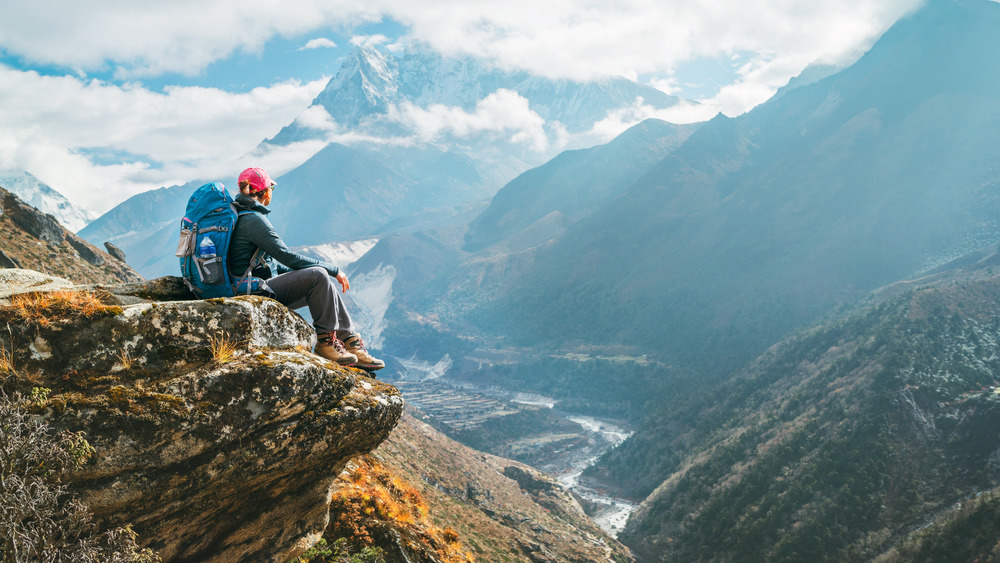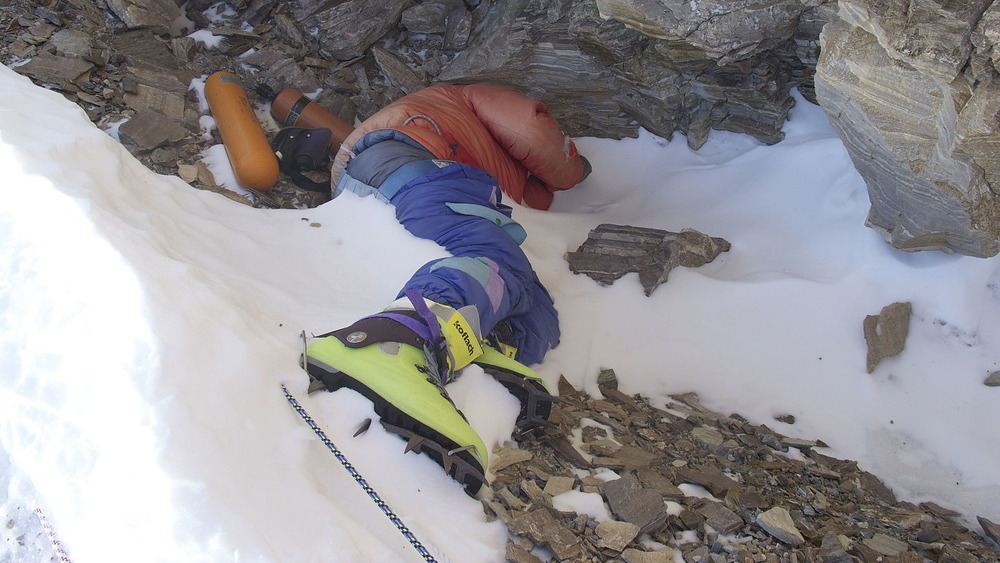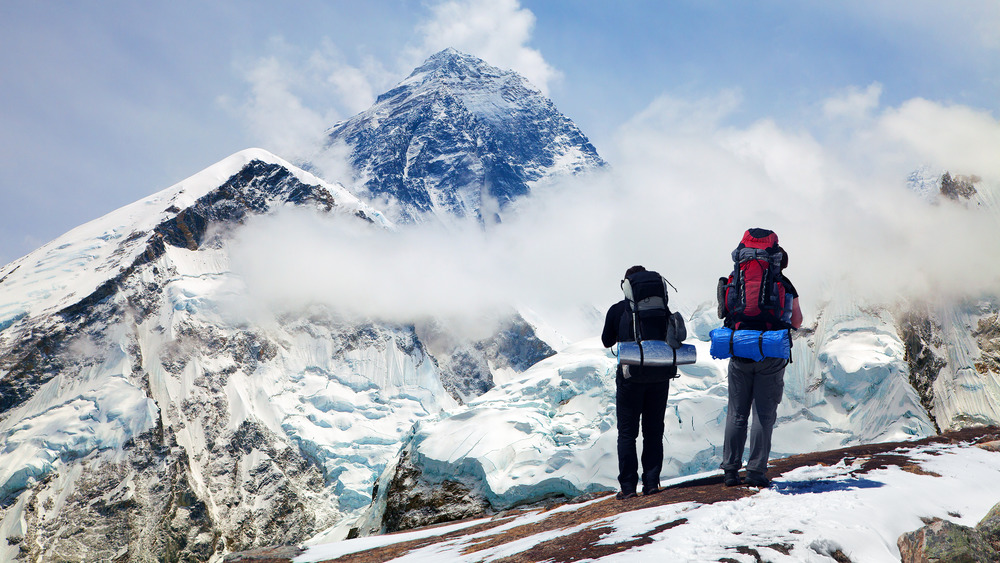The Sad Truth About Mount Everest's Rainbow Valley
The seven summits remain the ultimate challenge for mountaineers: Denali (North America), Aconcagua (South America), Kilimanjaro (Africa), Elbrus (Europe), Vinson Massif (Antarctica), Kosciuszko (Australia) and Everest (Asia). As Base Camp Magazine reports, conquering the peaks became a must-do in 1985 after American Richard Bass completed the challenge and others began replicating his climbs.
While the list of important summits to make can vary today — mountain climbing icon Reinhold Messner, also per Base Camp, includes Puncak Jaya, Australia, on his list — tackling Mount Everest holds a mystique that brings about 800 people every year to the 29,029-foot tall mountain that sits between China and Nepal.
The journey to the top of the world's highest mountain takes an average of 59 days to reach the Base Camp. Climbers then face an oft-precarious climb to its peak, according to Explorer's Passage. More than 4,000 climbs have been successful, but Everest has claimed many lives, too — about 300, according to the Sun. Weather on the mountain is temperamental, and sudden storms, even avalanches, can derail expeditions. The altitude can also make climbers sick, causing nausea, headaches, dizziness, exhaustion — all which lead to poor decision-making, according to Live Science.
The consequences of failing Everest's challenge are painfully obvious in the Rainbow Valley, a section of the path that's part of the "Death Zone," where a large portion of mountaineers lose their lives.
The dangers of Mount Everest
Named for the bright-colored jackets and gear that still remain on its victims, the Rainbow Valley reminds travelers of the possible deadly consequences of the climb.
One of the most famous of these individuals is "Green Boots" — Tsewang Paljor, according to the BBC, who lost his life about 25 years ago. He still lies on his side near the summit with a red fleece pulled over his frozen face and his arms wrapped tightly around his body. For many years, his legs, with their bright neon green boots, blocked part of the path.
"Many have lost their lives on Everest, and like Paljor, the vast majority remain on the mountain," said the news organization. "But Paljor's body, thanks to its prominence, came to be one of the most well-known." Outside reported that Paljor's body was moved off the trail in 2014 and that it no longer appears in a prominent spot, although it remains on the mountain.
Summit fever at Mount Everest
Most people who die on Everest stay there. As Outside points out, "removing bodies is physically demanding work, because over time they've frozen into the mountainside." The BBC added added that removing them is too dangerous, and some who have tried have died in that effort. Now, "the bodies on the peak are now so abundant that in some cases, climbers must step over some to reach the summit." The area of Rainbow Valley is essentially an "open graveyard," says Gizmodo.
Alison Levine recalled to NPR a trip she took in 2002 where her team chose to stop their climb about 275 feet from the top. "What you have to remember in the decision making process is that the summit is only the halfway point," she said. "The summit is never the goal. Ever. The number one goal is always to come back alive."
Yet for some, the goal of conquering the mountain becomes more paramount than survival. Gizmodo reports that often "summit fever," the need to reach the top of Everest at all costs, propels climbers to abandon normal behaviors — for instance, a reluctance to walk by the dead — to attain their goal. "In such alien conditions, utterly hostile to human life, climbers might face their own mortality," the website said. "Under the specter of pure, unadulterated fear, they must realize that they are beyond help as well as beyond helping anyone else."


